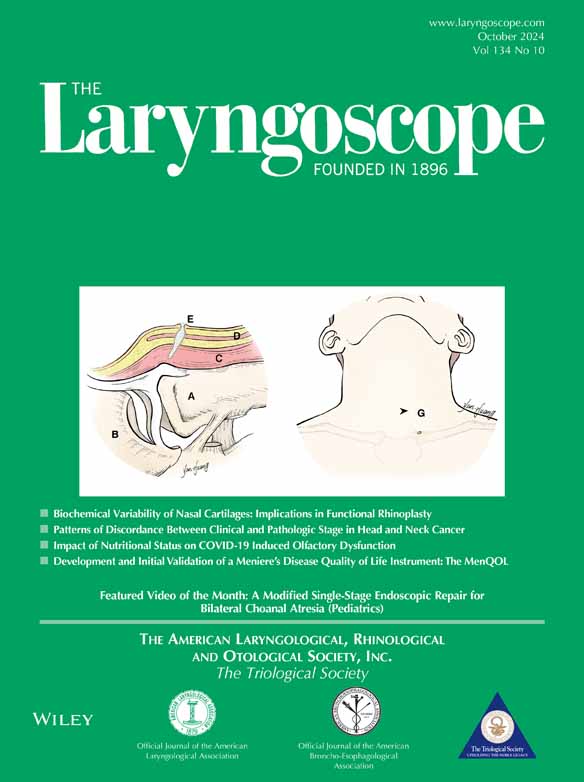Characterization of the MSAP Flap in Head and Neck Surgical Oncology: A 3D Cadaveric Study
Gianluca Sampieri and John Tran contributed equally to this manuscript and are considered to be co-first authors.
The authors have no funding, financial relationships, or conflicts of interest to disclose.
The abstract of this article was accepted for podium presentation at the AHNS 11th International Conference on Head and Neck Cancer, and presented on July 10th, 2023, in Montreal, Canada.
Abstract
Objectives
The medial sural artery (MSA) perforator flap is a versatile free flap. However, the cutaneous perforators are not well characterized. The objectives of this pilot anatomical study were to: (1) visualize in three-dimensions, as in-situ, the origin, course, and distribution of the cutaneous perforators, (2) characterize the number and frequency of the perforators, and (3) quantify mean pedicle length.
Methods
Thirteen cadaveric specimens were dissected, digitized, and modeled in 3D. Three-dimensional models and dissection photographs were used to determine the origin, course, number, distribution, and pedicle length of MSA perforators.
Results
The most common pattern consisted of three perforators (39% of specimens). The maximum number of perforators identified was four (23%). The majority of specimens (92%) had a cutaneous perforator originating from the lateral branch of the MSA and coursed most frequently in the second (43%) and third (37%) quartiles of the length of the tibia. Mean pedicle length was 19.1 ± 6.9 cm. Perforators originating from the medial branch of the MSA were significantly (p < 0.05) shorter than those from the lateral branch and were found to course only in the first quartile.
Conclusion
The 3D models constructed in this study provide a comprehensive overview of the location and course of the perforators, enabling measurement of parameters in 3D-space. Anatomical characterization of the MSA perforator flap using 3D analysis can assist reconstructive surgeons in understanding the relevant anatomy and optimizing the surgical technique for flap harvest.
Level of Evidence
N/A Laryngoscope, 134:4298–4303, 2024




